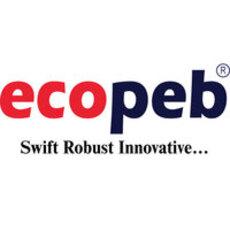Notifications

7 minutes, 31 seconds
-35 Views 0 Comments 0 Likes 0 Reviews

In the current lightning-fast construction world, pre-engineered buildings (PEBs) are experiencing phenomenal growth, and for good reason. They are quick, cost-effective, and highly adaptable.
However, the key ingredient behind every successful PEB is more than just nuts and bolts: it's designing software.
Software like AutoCAD, Revit, and STAAD. Pro is the digital backbone of PEB construction.
They allow engineers and architects to develop and create designs with pinpoint accuracy, speed, and originality.
Throughout this blog, we will look at the role that designing software plays in the PEB industry and how it is changing the way buildings are designed and built.
1. Precision Equals Perfect
In the case of PEBs, unlike traditional construction, they are built off-site and then assembled on-site. Therefore, there is no room for error. Each measurement must be spot-on.
Designing software allows engineers to create very precise 2D design drawings and 3D models. The ability to use object snaps, dimensions, and layers helps eliminate errors that can be very costly and helps guarantee that all components fit together perfectly during assembly.
This level of precision results in fewer mistakes, less rework, and improved building reliability.
2. Faster Designs, Quicker Builds
In the construction business, time is money. PEBs are fast, and design software can help engineers keep pace with speed. With things like reusable templates, custom blocks, and automated commands, engineers can produce drawings and plans much faster than by manual drafting.
This fast design capability furthers the main benefit of PEBs as they move fast from concept to completion.
3. See It Before You Build It
One of the coolest benefits of modern design software is 3D modeling and visualization. Instead of having to rely on 2D blueprints, engineers and clients can walk through a virtual version of their building before anything is built.
Whether a warehouse, showroom, or office, engineers using 3D modeling can more easily spot design problems, assess aesthetic changes, and make informed decisions early in the project.
4. Stronger Structures Through Smart Analysis
Designing software not only ensures buildings look nice but also are safe and structurally sound. Tools like STAAD.Pro or ETABS allows engineers to figure out how the building will perform based on different loadings, weather, and different stressors.
So, your PEB is fast and efficient but also safe and built to last, while most likely passing all building codes and safety regulations.
6. Fewer Headaches, Better Teamwork
PEB projects use a lot of moving parts and people architects, structural engineers, dedicated fabricators, and site supervisors. Coordinating them all can be a task in itself!
Fortunately, modern and comprehensive design software using platforms like Revit and AutoCAD allows multiple users to work together on a single model and collaborate in real-time. The simultaneous use of models helps avoid clashes (such as ductwork running into a steel beam) and helps align everyone’s workflow on the same page, saving everyone time and headaches down the line.
7. Automatically Generated Documents
Good design is half of the work. The second part of the job lies in clean documentation for fabrication, permits, and construction. Designing software automatically generates the most vital documents necessary for construction, installation, and production, such as shop drawings, assembly documents, and material take-offs.
Better yet, any changes to the design result in automatic updates to each document. This saves time and ensures everyone is working from the most current version.
6. Fewer Headaches, Better Teamwork
PEB projects use a lot of moving parts and people—architects, structural engineers, dedicated fabricators, and site supervisors. Coordinating them all can be a task in itself! Fortunately, modern and comprehensive design software using platforms like Revit and AutoCAD allows multiple users to work together on a single model and collaborate in real-time online.
7. Automatically Generated Documents
Good design is half of the work.
The second part of the job lies in clean documentation for fabrication, permits, and construction. Designing software automatically generates the most vital documents necessary for construction, installation, and production, such as shop drawings, assembly documents, and material take-offs. Better yet, any changes to the design result in automatic updates to each document. This saves time and ensures everyone is working from the most current version.
8. Expanding Creativity and Designs
Unlike the days of the 'steel box' PEB, PEB structures are now used for many building types, including industrial buildings, retail spaces, and even trendy commercial spaces! The cycle of inspiration and ideation is made easier by design software, allowing designers and architects to conceptualize more creative shapes, textures, and plans in a timely way.
Moreover, equipment such as customization, parametric design, and even energy modeling allows designers to develop unique buildings while incorporating all the benefits and efficiencies you may get with PEB construction.
Conclusion
Designing software is no longer just a luxury in the world of pre-engineered buildings - it is a necessity. It makes the process smoother, faster, and more accurate.
Designing software has supercharged the design process; from the first draft sketch to the last fabricated bolt, it's a silent but real partner in every successful PEB project.
If you find yourself in the PEB industry or are considering a new investment in PEB production, be sure that your team is working with actual design software. Because in modern construction, great design software is equal to great buildings.
For more contact : https://ecopeb.com/
pre engineered buildings peb buildings peb structure manufacturer ecopeb pebmanufacture
